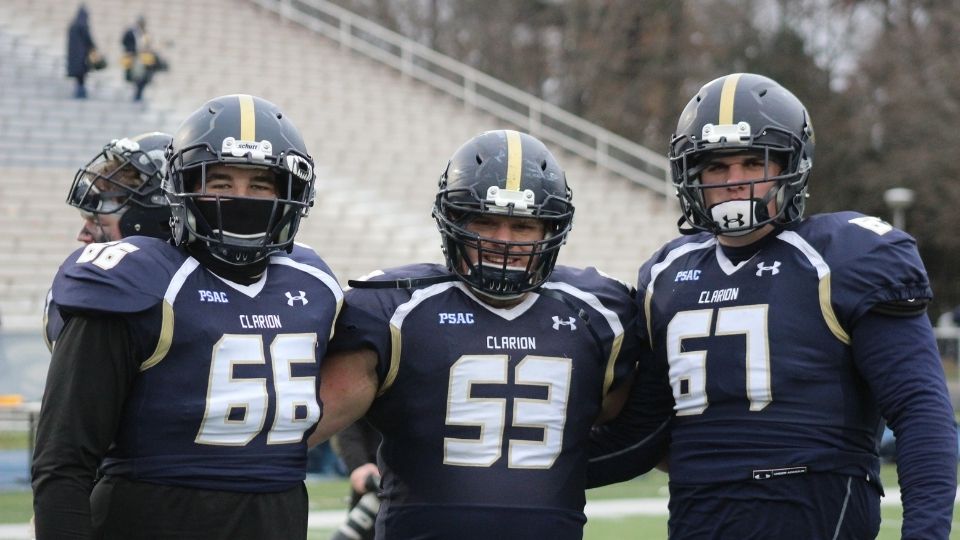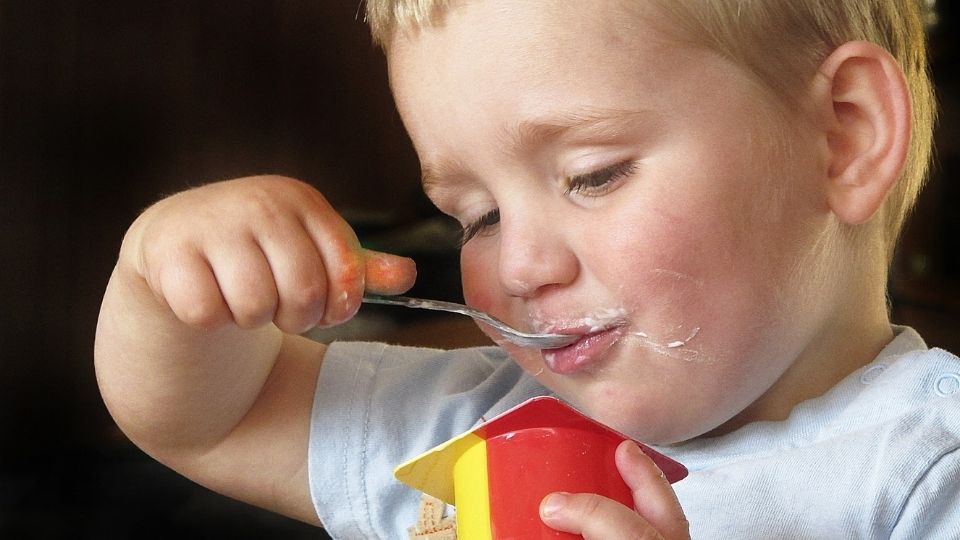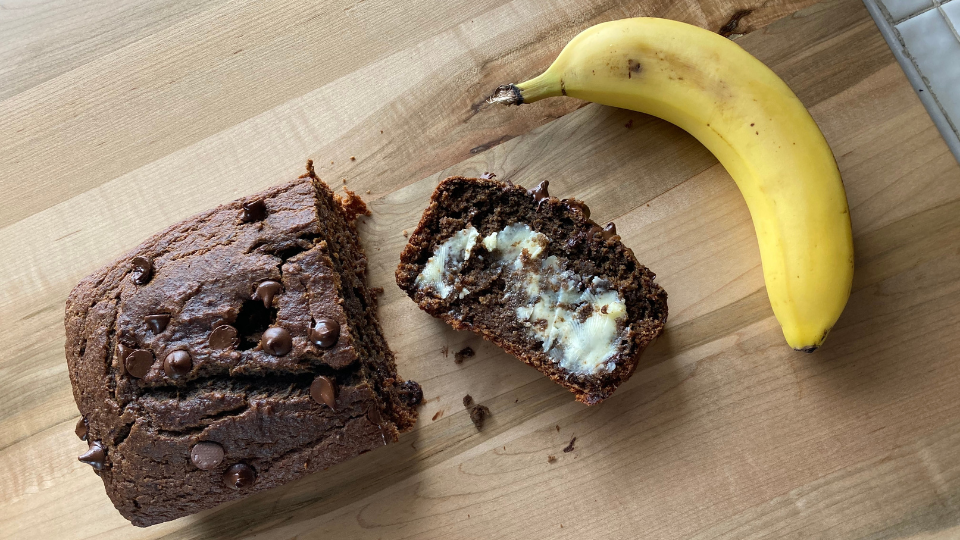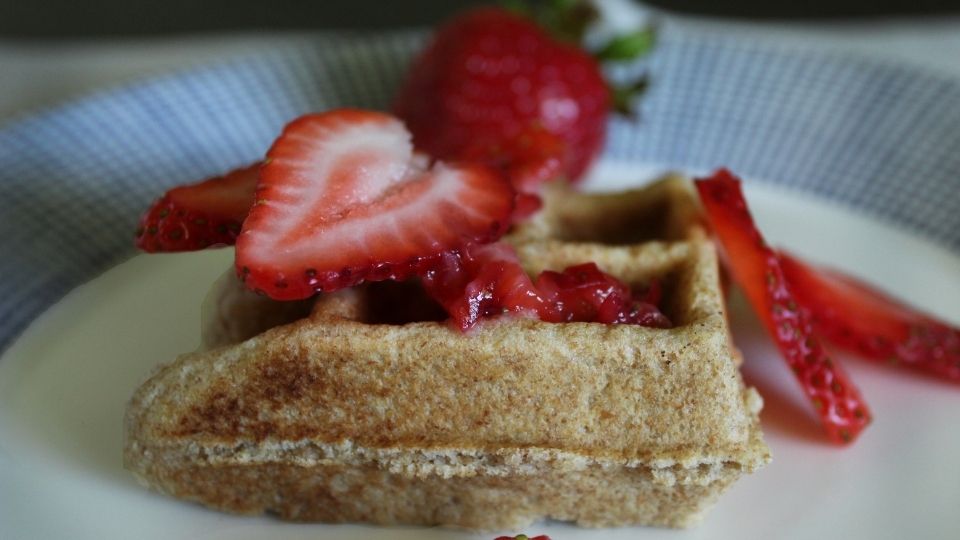Nutritional Needs Among High School Athletes

High school athletes have a greater need for nutritional adequacy for proper growth, development, wellness and performance as compared to students who do not participate in sports (Bingham, Borkan, & Quatromoni, 2015). In this fact sheet we will discuss the purpose of carbohydrates, protein, fat, and hydration, why they are necessary in an athlete’s diet, food sources of each, and fun facts to help the young athlete enhance their diet. A balanced eating pattern that includes a wide variety of fresh, minimally processed whole foods is recommended (Bingham et al., 2015). In addition, a non-diet approach to nutrition that focuses on intuitive eating is recommended for high school athletes (Bingham et al., 2015). This approach is weight neutral and centered on respecting body shape and size diversity (Bingham et al., 2015).
Carbohydrates

Carbohydrates, also known as carbs, are the body’s major fuel source for exercise because they provide energy for muscle function (Boeckner, 2015). The body also uses carbs for non-energy functions like helping use fats more effectively (Boeckner, 2015). Interestingly, carbs are the only fuel used for athletic power moves such as a slam-dunk or a sprint to the goal line (Rosenbloom, 2016). It is recommended that at least 50% of a young athlete’s diet should consist of carbohydrates (Smith, Homes, & McAllister, 2015).
Protein
Protein is the nutrient responsible for building and repairing muscles. It also helps fight disease and infection and supplies energy when the body needs it (Boeckner, 2015). An adequate intake of protein is between 1.2 and 1.8 grams of protein per kilogram* of body weight, which is about 10-30% of total energy intake (Boeckner, 2015; Smith et al., 2015). *Conversion tip: 1 kg = 2.2 lbs.
Fat
Fats are a concentrated source of energy that supply essential elements that keep you healthy (Boeckner, 2015). Fats are needed to absorb several vitamins essential in the diet, and also help provide a feeling of fullness (Purcell, 2013). About 30% of your total energy intake should come from fat (Boeckner, 2015). Specifically look for unsaturated fats, while avoiding trans fats (Purcell, 2013). Limit fatty foods eaten before competition because they take longer to digest, which may leave you feeling sluggish and uncomfortable (Boeckner, 2015).
Sources of Carbohydrates, Protein, and Fat:
| Food Type | Most-of-the-Time Food Sources | Once-in-a-While Food Sources | Snack Ideas |
|---|---|---|---|
| Carbohydrate | Pasta, whole grains (whole wheat bread, oats, brown rice, etc.) dried beans & peas, milk, yogurt, fruits, and vegetables (Boeckner, 2015; Purcell, 2013) | Candy, sugar-sweetened beverages, cake, cookies, white bread, white rice, and other refined products (Boeckner, 2015) | Greek yogurt, fruits, whole grain bread products, cereal, oatmeal, granola bars, vegetables (carrots, cucumbers, bell peppers, celery, etc.), popcorn, smoothies, and peanut butter and jelly sandwiches (half or whole) |
| Protein | Lean meat & poultry, fish, eggs, dairy products, beans, nuts, and legumes (Purcell, 2013) | Fatty & processed meats such as ham, bacon, sausage, hot dogs, and cold cuts (Inoue-Choi, Sinha, Gierach, & Ward, 2015) | Nuts (almonds, pistachios, walnuts, etc.), string cheese, Greek yogurt, trail mix, protein bars, regular and chocolate milk, peanut butter and jelly sandwich (half or whole), cottage cheese, beef jerky, and peanut or other nut butters. |
| Fat | Fatty fish (such as salmon, trout, tuna, sardines, etc.), flaxseed, oils, nuts, and seeds (Kerksick & Fox, 2016) | Chips, candy, fried food, and baked goods (Purcell, 2013) | Nuts (almonds, pistachios, walnuts, etc.), peanut butter or other nut butters, sunflower seeds, |
Hydration
Water helps with digestion and elimination (Boeckner, 2015). It also regulates body temperature (Boeckner, 2015). It is important to replace water lost through sweat after exercise because it can lead to dehydration. If dehydration occurs, an athlete’s performance will decline (Boeckner, 2015).
Fluid recommendations before, during, and after exercise:
| 4 hours prior to exercise | Every 15-20 minutes during exercise | For every 0.5 kg of body weight lost after exercise |
|---|---|---|
| 0.2-0.25 oz. (5-7 mL or 0.02- 0.03 cup)/kg of body weight | 5-10 oz. (150-300 mL or 0.7-1.25 cups) | 15-23 oz. (450-675 mL or 2-3 cups) |

For example, a male athlete weighing 150 lbs. should consume 12-16 oz. (340-480 mL or 1.5-2 cups) 4 hours prior to exercise. Water is great for rehydration (Castillo, Kern, & Bolter, 2016). Chocolate milk may be considered as an effective alternative to sugar-sweetened sports drinks (Karp et al., 2006). It contains nutrients similar in amounts to those found in typical carbohydrate-electrolyte sports drink and also provides protein, which makes it a great rehydration solution for active individuals and useful for muscle growth (Stensel, 2017).
Seven tips for high school athletes to stay adequately nourished:
- Eat to compete: Eat breakfast, lunch, and dinner with snacks in between to be properly fueled for practice or event (Bingham et al., 2015).
- Color your plate: Load your plate with different colored foods to provide your body with different nutrients (Bingham et al., 2015).
- Fill your plate with fresh food: limit foods that come in packages and focus on fresh, wholesome foods (Bingham et al., 2015).
- Keep healthy snacks handy in the athlete’s backpack, locker, vehicle, or in the house (Rosenbloom, 2016).
- Reload for rapid recovery: refuel your body after exercise to help recovery (Bingham et al., 2015).
- Include some protein in every meal and snack to help muscles recover (Rosenbloom, 2016).
- Eat about 20 grams of protein following exercise to help with muscle repair and growth, and eat at least 0.75 g/kg of body weight of carbs to enhance recovery and improve endurance (Moore, 2015; Smith et al., 2015).
Healthy snack ideas to boost the athlete's nutrition:
- Eat a light snack before practice (especially if the athlete has an early lunch period) such as a turkey sandwich or an orange and string cheese, along with 1-2 cups of water (Rosenbloom, 2016).
- After practice or a game, refuel the athlete with low-fat chocolate milk, banana, and a handful of trail mix (Rosenbloom, 2016).
2015-2020 Dietary Guidelines for Americans
- Follow a healthy eating pattern across the lifespan
- Focus on variety, nutrient density, and amount
- Limit calories from added sugars and saturated fats and reduce sodium intake
- Shift to healthier food and beverage choices
- Support healthy eating patterns for all (United States Department of Agriculture, 2015).
For additional information on the 2015-2020 Dietary Guidelines for Americans, visit https://health.gov/dietaryguidelines/2015/guidelines/.
References
- Bingham, M.E., Borkan, M.E., & Quatromoni, P.A. (2015). Sports nutrition advice for adolescent athletes: A time to focus on food. American Journal of Lifestyle Medicine, 9(6), 398-402. Doi: 10.1177/1559827615598530
- Boeckner, . (2015). 4-H 356 Nutrition, fitness and youth. Nebraska 4-H Clubs: Historical Materials and Publications, 405. Retrieved from http://digitalcommons.unl.edu/a4hhistory/405
- Castillo, C.J., Kern, M., Lee, M.C., & Bolter, N.D. (2016). The comparison of the effects of water, sports drink, and glucose polymer drink on hydration and physical performance amongst soccer athletes. European Journal of Sports Medicine, 4(1), 1- 18. Retrieved from http://eujsm.com/index.php/EUJSM/article/view/139/70
- Inoue-Choi, M., Sinha, R., Gierach, G.L., & Ward, M.H. (2015). Red and processed meat, nitrite, and heme iron intakes and postmenopausal breast cancer risk in the NIH-AARP diet and health study. International Journal of Cancer, 138(7), 1609- 1618. Doi: 10.1002/ijc.29901
- Karp, J.R., Johnston, J.D., Tecklenburg, S., Mickleborough, T.D., Fly, A.D., & Stager, J.M. (2006). Chocolate milk as a postexercise recovery aid. International Journal of Sport Nutrition and Exercise Metabolism, 16, 78-91. Retrieved from http://citeseerx.ist.psu.edu/viewdoc/download? doi=10.1.1.469. 9728&rep =rep 1&type=pdf.
- Kerksick, C.M., & Fox, E. (2016). Sport nutrition and youth In Fox, E. & Kerksick, C.M. (Eds.), Sports Nutrition Needs for References
- Child and Adolescent Athletes (10). Baco Raton, FL: Taylor & Francis Group.
- Moore, D.R. (2015). Nutrition to support recovery from endurance exercise: Optimal carbohydrate and protein replacement. Current Sports Medicine Report, 14(4), 294-300. Doi: 10.1249/JSR.0000000000 000180
- Purcell, L.K. (2013). Sport nutrition for young athletes. Paediatrics & Child Health, 18(4), 200-202. Retrieved from https://www.ncbi.nlm.nih.gov/pmc/articles/PMC3805623/
- Rosenbloom, C. (2016). Teen nutrition for fall sports. Academy of Nutrition and Dietetics. Retrieved from https://www.eatright.org/fitness/sports-and-performance/fuelingyour-workout/teen-nutrition-for-fall-sports
- Smith, J.W., Holmes, M.E., & McAllister, M.J. (2015). Nutritional considerations for performance in young athletes. Journal of Sports Medicine, 2015, 1-13. http://dx.doi.org/10.1155/2015/734649
- Stensel, D. (2017). The interaction between physical activity and nutrition is integral to general health and sports performance. British Nutrition Foundation. https://doi.org/10.1111/nbu.12271
- United States Department of Agriculture. (2015). Dietary Guidelines for Americans 2015-2020 Eight Edition. Retrieved from https://health.gov/dietaryguidelines/2015/guidelines/
Authors
Andy Mitchell Dietetics Student; Mateja R. Savoie Roskos PhD, MPH, RD; Natalie Norris MS, RD, CSSD; Carrie Durward PhD, RD
Related Nutrition Articles







